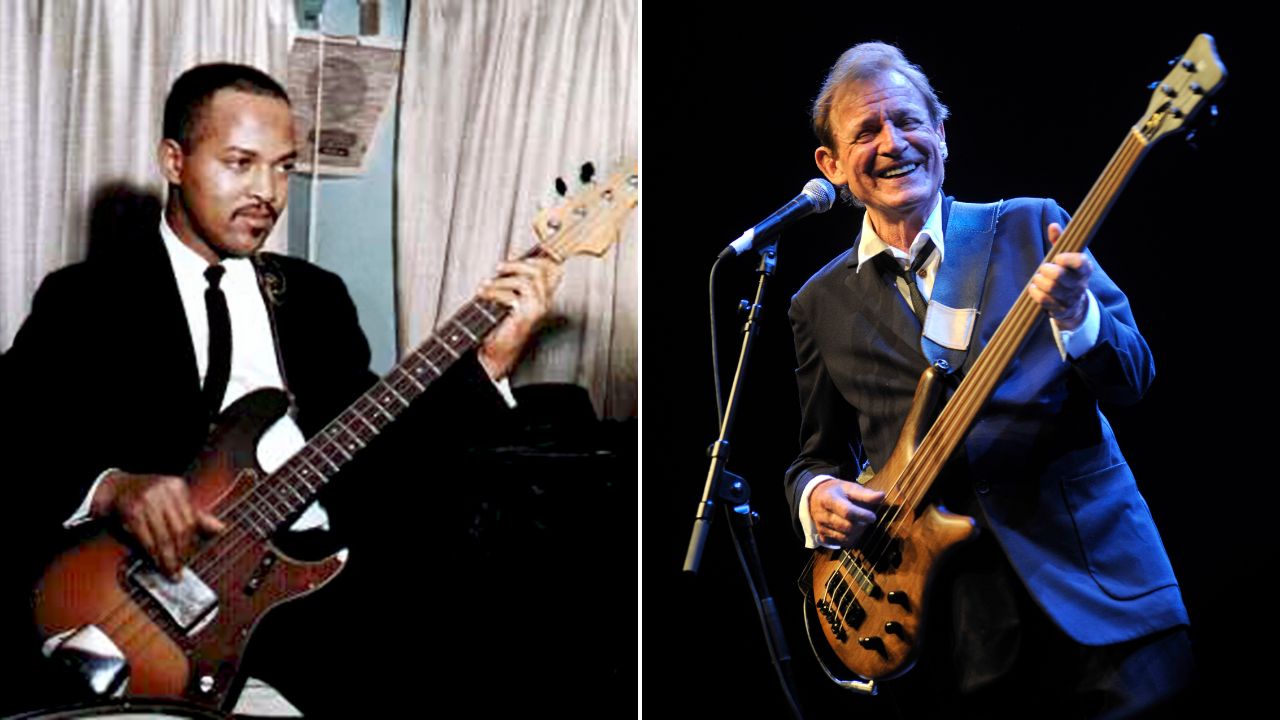“The door burst open. It was James, who was late and had come into the wrong room. He started listening and said, ’No, no, that's not the way you do it,’ and grabbed my EB-3”: Jack Bruce on his chance meeting with Motown hit-maker James Jamerson
Speaking in 2001, the late Cream bassist recalled his encounter with Jamerson at the Record Plant in L.A.

Ask any bass-playing great of the last 50 years who their heroes are, and you can bet that James Jamerson will feature high up the list. A bass-playing pioneer, some might say a visionary.
“The first time I met James Jamerson was in 1974 at the Record Plant in L.A.,” recalled Jack Bruce in a Sept/Oct '01 Bass Player interview. “He was there to do a Stevie Wonder session, and I was next door, coincidentally doing a tribute-to-Stevie track called Keep On Wondering for my album Out of the Storm.
“I was overdubbing my bass part in the control room, and suddenly the door burst open. It was James, who was late and had come into the wrong room. He started listening and said to me, ’No, no, that's not the way you do it,’ and he grabbed my EB-3 and started playing to show me how it should be done!”
“I was there for months doing my record, so I saw him a lot. We had some good talks, and he eventually asked if I wanted to do some of his session load. He was a really nice guy, but he was a little bitter because he felt exiled from Motown.”
“Marvin Gaye, Stevie Wonder… he’s on all those great tracks, but they tried to muddy the waters a bit sometimes and say it was another bass player. He played on 30 number ones, which is not a bad record.”
Bruce hit a milestone of his own back in April 2010 with the release of his authorised biography, Composing Himself. The highlights are numerous, with stories from his days with Alexis Korner's Blues Inc., the Graham Bond Organisation – an incarnation of which featured the young John McLaughlin – John Mayall's Bluesbreakers, and, of course, Cream, in which he created a mesmerising rock spectacle alongside Ginger Baker and Eric Clapton.
As a bassist, Bruce reached creative maturity with Cream. If you listen to his early work on records like the Graham Bond Organization's The Sound of '65 (with Bruce on Fender Bass VI, an instrument he continued to play through the making of Fresh Cream) you can hear his innovative style beginning to emerge.
Get The Pick Newsletter
All the latest guitar news, interviews, lessons, reviews, deals and more, direct to your inbox!
Bruce explained it this way in a 1993 Bass Player interview: “I was trying to find different sounds and different approaches. I was trying to play it like a guitar.”
This wasn't just a matter of cranking his amp, flinging out lots of notes, and bending strings – although he certainly did those things. Bruce fervently believed that basslines should be melodic as well as supportive, and in asserting this concept in Cream he elevated the role of the rock bass player to new heights.
That tone's evolution is easy to follow thanks to a 1997 Cream boxset, Those Were the Days, on which the bass moves from the polite studio sound of Fresh Cream to the power of such 1968 live tracks as Spoonful and Sweet Wine.
The latter has one of the most striking examples of Bruce's “like a guitar” concept. About eight minutes into the jam, Bruce and Clapton reverse roles, with Bruce playing high on the bass neck as Clapton lays down bass figures on guitar.
We had to ask about the offer he received in 1965 from none other than Marvin Gaye to join his band. Does Bruce ever wish he'd said yes? “Around that time, I was suffering a lot of criticism for playing too many notes, or playing in a certain way. He loved my playing, though, so I must have been doing something right.”
“Yes, it would have been amazing to see a white guy go there and be a part of that scene: it could have changed a lot of things and would have been wonderful. But I was too young and you wouldn't have had Cream. What happens happens, and I'm not too sorry in the long run.”

Nick Wells was the Editor of Bass Guitar magazine from 2009 to 2011, before making strides into the world of Artist Relations with Sheldon Dingwall and Dingwall Guitars. He's also the producer of bass-centric documentaries, Walking the Changes and Beneath the Bassline, as well as Production Manager and Artist Liaison for ScottsBassLessons. In his free time, you'll find him jumping around his bedroom to Kool & The Gang while hammering the life out of his P-Bass.
“When I first heard his voice in my headphones, there was that moment of, ‘My God! I’m recording with David Bowie!’” Bassist Tim Lefebvre on the making of David Bowie's Lazarus
“One of the guys said, ‘Joni, there’s this weird bass player in Florida, you’d probably like him’”: How Joni Mitchell formed an unlikely partnership with Jaco Pastorius







![[from left] George Harrison with his Gretsch Country Gentleman, Norman Harris of Norman's Rare Guitars holds a gold-top Les Paul, John Fogerty with his legendary 1969 Rickenbacker](https://cdn.mos.cms.futurecdn.net/TuH3nuhn9etqjdn5sy4ntW.jpg)





